Our main instrumentation includes high field nuclear magnetic resonance (NMR), liquid chromatography–mass spectrometry (LC-MS), gas chromatography-mass spectrometry (GC-MS), high-performance liquid chromatography (HPLC), circular dichroism spectrometer (CD), inductively coupled plasma optical emission spectrometry (ICP-OES), and fluorimeter.
The facility affords investigators the ability to monitor chemical reactions and protein stability, to determine molecular structure, to access purity including trace metal content, or to study other properties of a wide variety of materials.
The facility offers assisted instrument use to investigators or a data acquisition service. Consulting is available to assist with experimental design and data interpretation. University personnel who anticipate frequent use of an instrument may request training to become an independent operator.
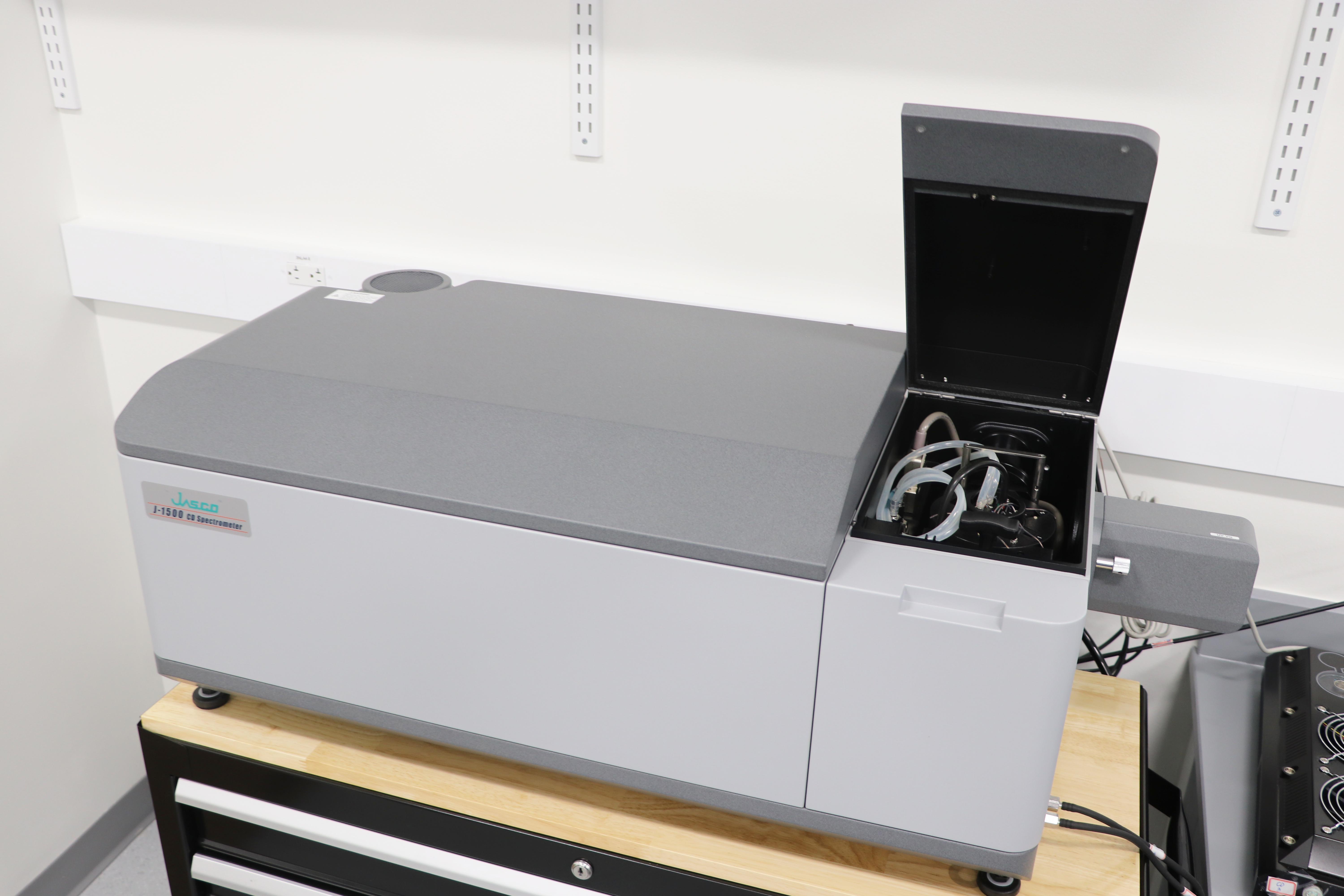
Circular Dichroism (CD) spectroscopy
Versatility for a Wide Range of Applications
Circular dichroism (CD) spectroscopy is a form of light absorption spectroscopy that measures the difference in absorbance of right- and left-circularly polarized light (rather than the commonly used absorbance of isotropic light) by a substance. The J-1500 Circular Dichroism spectrophotometer in our facility is specifically designed for high sensitivity measurements in the near- and far-UV regions, for scientists that need confidence in the data from characterization studies of biomolecule structure, function and stability under a wide variety of experimental conditions. Temperature control systems can be coupled with multi-position cells to run thermal melts, providing researchers with CD and thermodynamic data sets for conformational and folding studies.
Rates:
| Use Type | Internal | External | Commercial |
| Off Hours Self-Use | $8/hr | $12/hr | N/A |
| Assisted Usage | $42/hr | N/A | $100/hr |
| Prime Time Instrument Charges | $15/hr | $25/hr | $50/hr |
DichroWeb-Online Circular Dichroism Deconvolution
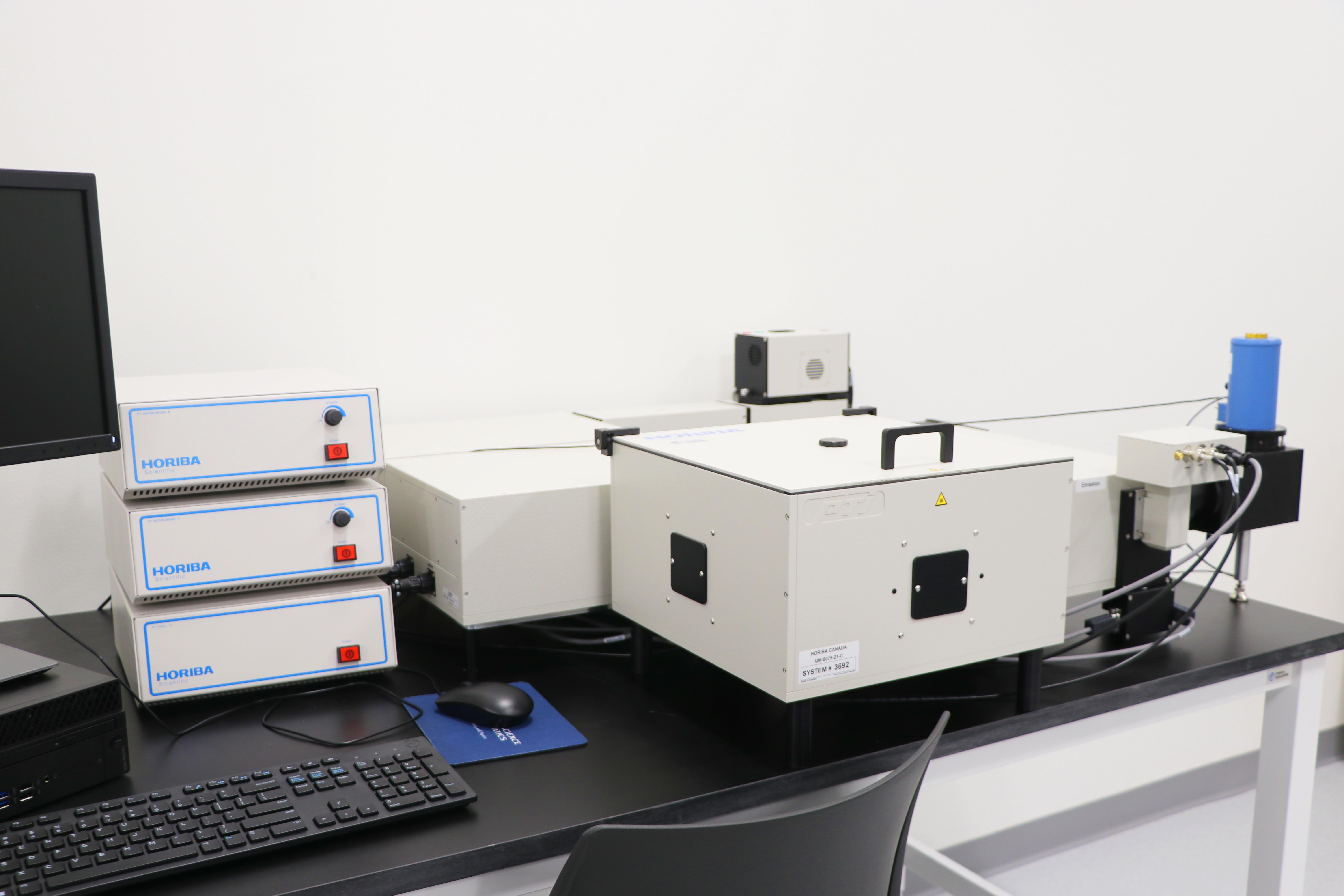
Flourimeter
A fluorimeter measures the fluorescence or light emitted by different fluorescing objects. Fluorescence occurs when light of specific wavelength hits and excites electrons in a sample, and the electrons in that sample instantly emit or fluoresce light of a different wavelength. All fluorescent objects have its own fingerprint, meaning that it excites and emits predictable types of light. Fluorescent samples produce an emission spectrum that is measured through a monochromator connected to a photomultiplier detector similar to spectrophotometer. After exciting a sample, a Fluorometer allow us to obtain and measure various attributes of that sample’s fluorescence, including its intensity, spectral wavelengths and lifetime. The fluorescence of a sample can be an indirect probe of the sample's environment, describing the solvent-solute interactions, inter- and intramolecular interactions, and so on. Fluorescence can be used for both qualitative and quantitative analysis of samples. The core facility hosts a HORIBA PTI fluorimeter.
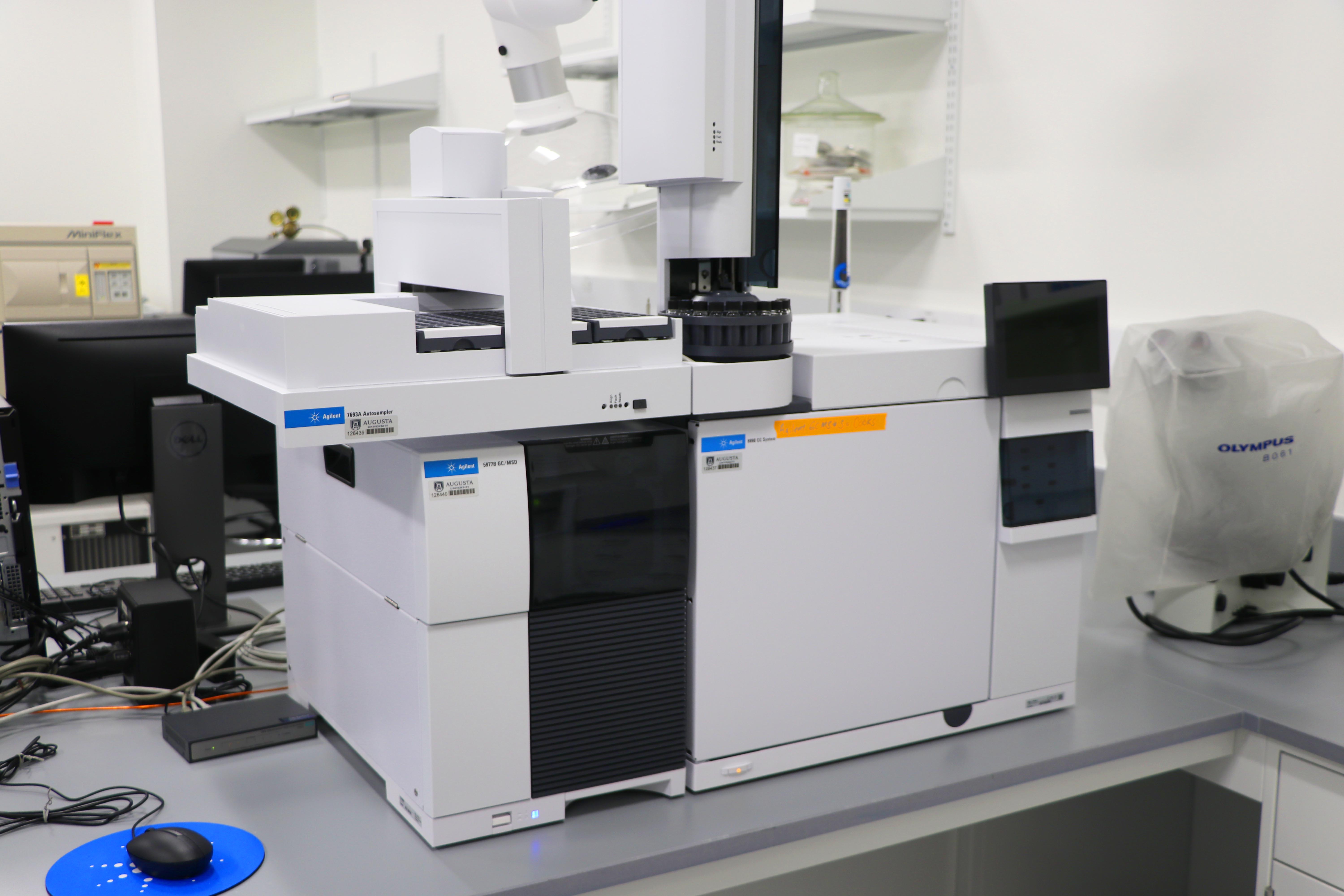
Gas chromatography-mass spectrometry
Applications:
Gas chromatography–mass spectrometry (GC-MS) is an analytical method that combines the features of gas-chromatography and mass spectrometry to identify different substances within a test sample. Analysis begins with the gas chromatograph, where the sample is effectively vaporized into the gas phase and separated into its various components using a capillary column coated with a stationary phase. Once the components leave the GC column, they are ionized and fragmented by the mass spectrometer using electron ionization sources. Ionized molecules and fragments are then accelerated through the instrument’s mass analyzer. It is here that ions are separated based on their different mass-to-charge (m/z) ratios. The core facility hosts three Agilent single quadrupole GC-MS.
GC-MS is highly effective and versatile analytical techniques with numerous scientific applications to cater the field of applied Sciences and Technology.
Rates:
| Use Type | Internal | External | Commercial |
| Off Hours Self-Use | $10/hr | N/A | N/A |
| Instrument Charges | $8/hr | $12/hr | $20/hr |
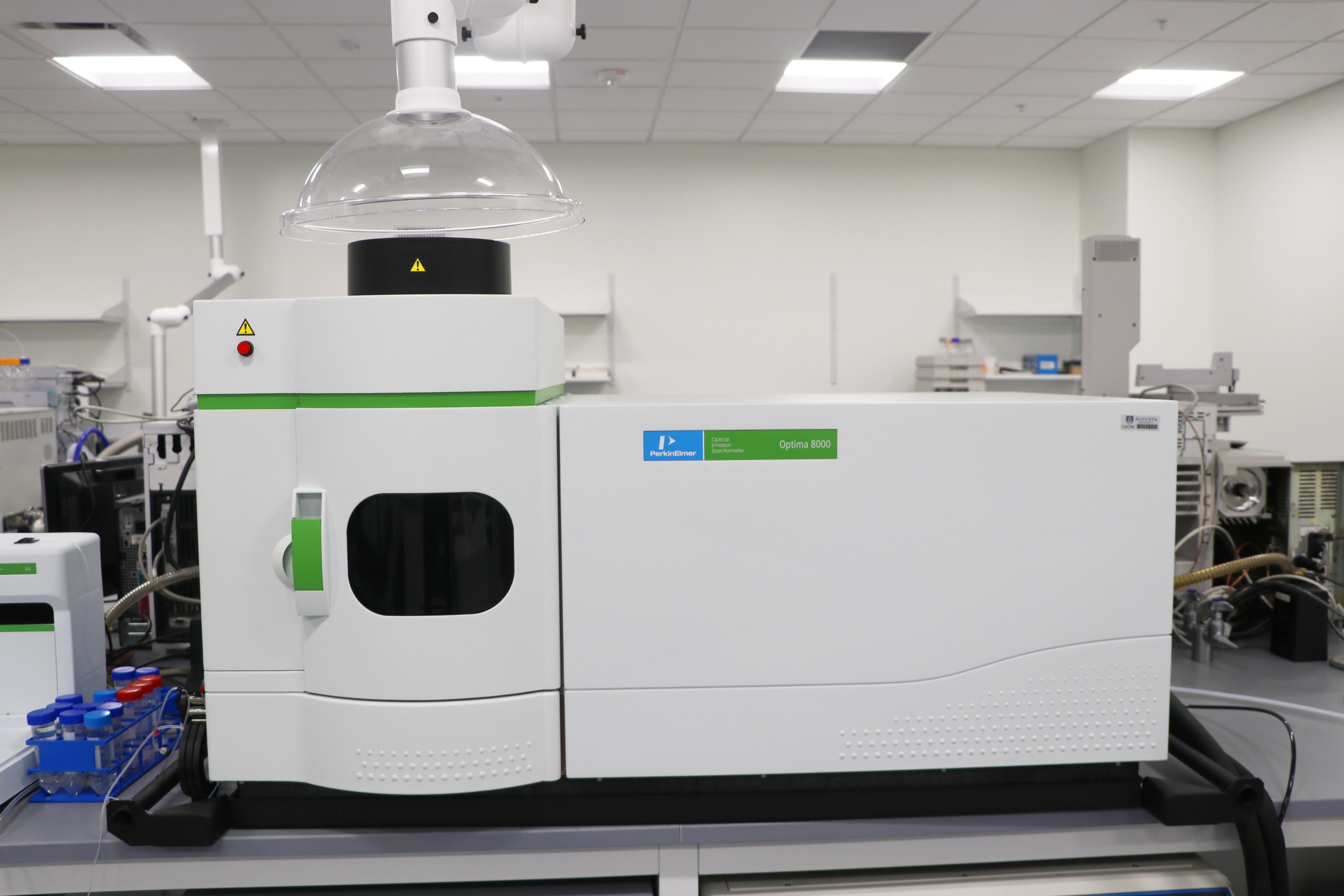
Inductively Coupled Plasma Optical Emission Spectrometer (ICP-OES)
Applications
The Optima 8000 ICP-OES (Inductively coupled plasma-optical emission spectrometer) is equipped with a unique double monochromator, dual backside-illuminated charge-coupled device detector, real time dynamic wavelength stabilization, and automatic dual viewing of the plasma torch. It provides fast and reliable analysis of major and minor elements of small samples in solution. It can be used for routine multi-element analysis (ppb to ppm range) of environmental, geological or biological samples.
Rates:
| Use Type | Internal | External | Commercial |
| Assisted Usage (Per Sample) | $10/sample | $20/sample | $40/sample |
| Assisted Usage (Hourly) | $30/hr | $45/hr | $60/hr |
ICP-OES Sample Preparation
ICP-OES Data Analysis
ICP-OES Systems and Technologies
Sensitivity, Background, Noise and Calibration in Atomic Spectroscopy
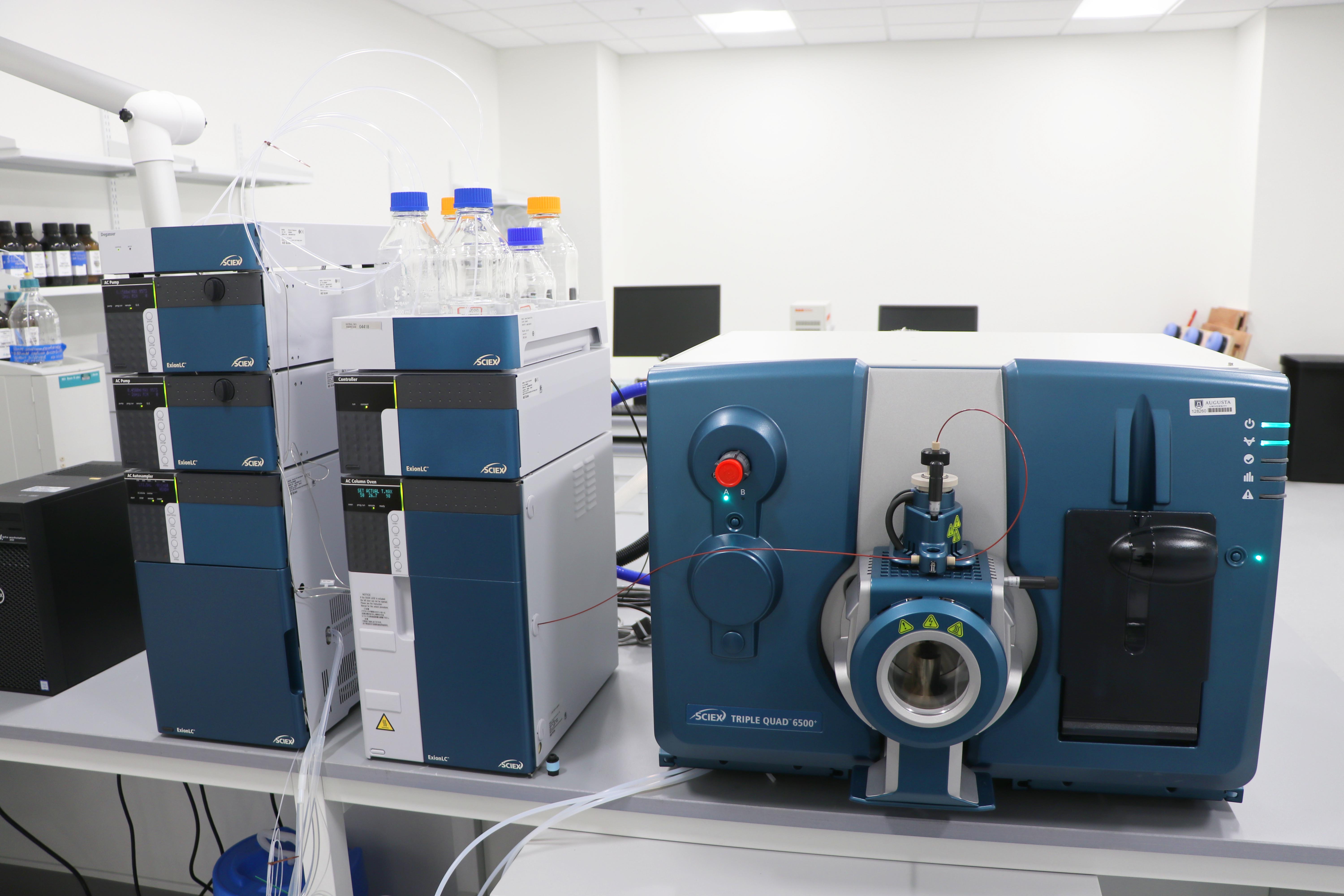
Liquid Chromatography/Mass spectrometry
Applications
LC/MS is a powerful analytical technique that combines the resolving power of LC with the detection specificity of MS. LC-MS is extensively used in sample analysis. The facility current houses an Agilent quadrupole Mass Spectrometer (MS) as well as analytical and preparative liquid chromatography (LC) systems to provide analytical support including quantification and identification of small molecules from biological samples, natural products, or synthetic mixture.
Rates:
| Use Type | Internal | External | Commercial |
| Instrument Charges | $8/hr | $15/hr | $30/hr |
| Assisted Usage | $30/hr | $40/hr | $60/hr |
LC-MS Sample Preparation Guide
Agilent InfinityLab 6100 Series LC/MS
LC-MS/MS in the Clinical Laboratory - Where to From Here?
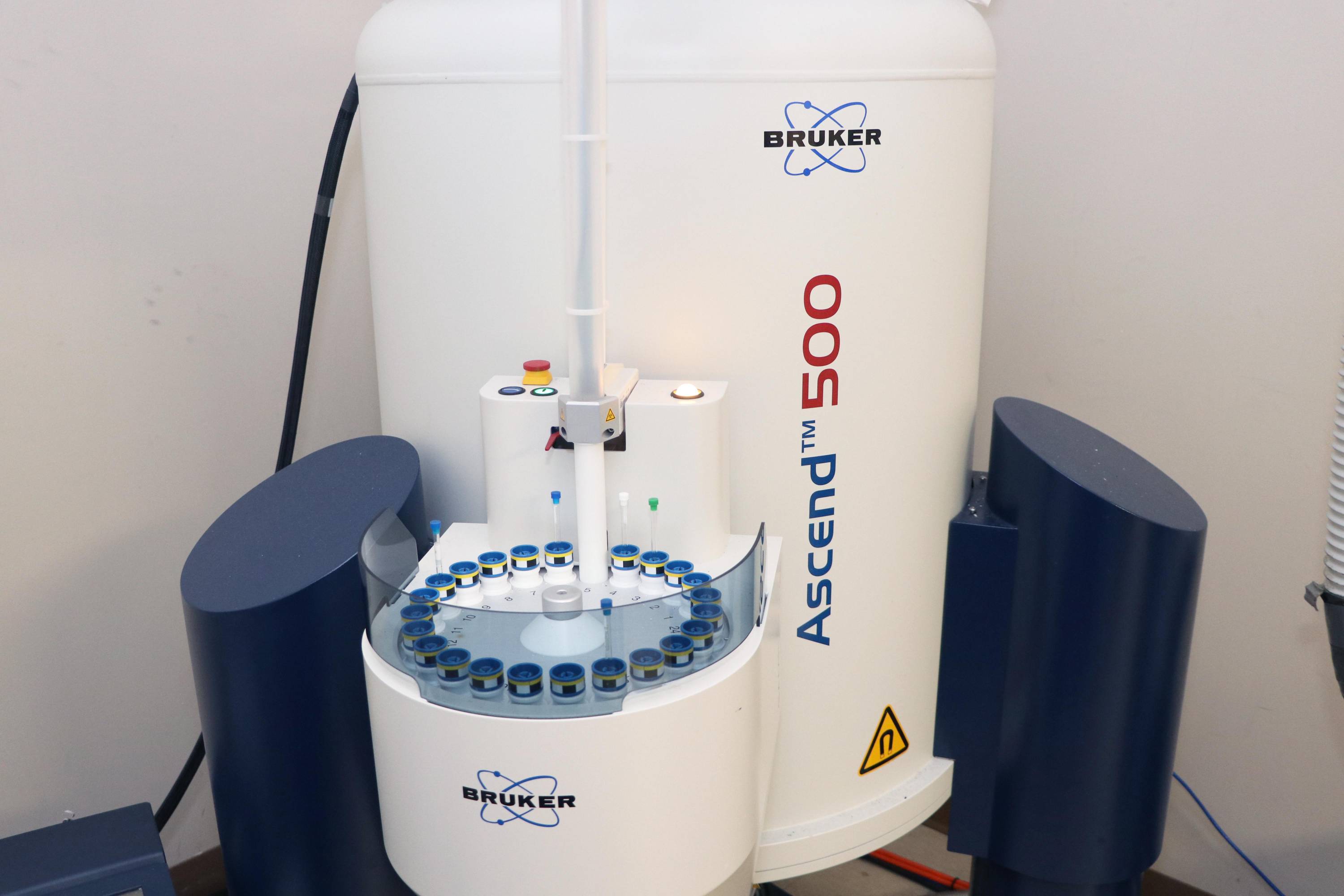
Nuclear Magnetic Resonance
Applications
The Nuclear Magnetic Resonance (NMR) instruments can provide structure or molecular interaction analysis of small organic molecules, peptides, 3D structure of proteins up to 12-15 kDa, ligand binding to larger proteins, lipids, carbohydrates, nucleic acids of 8 kDa or less, and selected metals.
The 500 MHz NMR instrument has different probes allowing multiple configurations while the 300 MHz NMR is limited to proton, carbon, and fluorine studies.
Trained users have 24h access.
Consultation is available to determine recommended experiments, to operate the instrument, or to assist with data interpretation. Long experiments are frequently restricted to nights and weekends. Experiments that require a hardware change must be scheduled in advance.
Default hardware includes a Prodigy Cryoprobe (Inverse probe) for high sensitivity proton, carbon, nitrogen, and fluorine studies of samples in liquid solution. Available hardware includes a High Resolution Magic Angle Spinning probe for lipids, cells, polymers, or high viscosity samples and a Broad Band (Direct probe) for a wide range of nuclei.
Contact facility to arrange analysis of external or commercial samples. Training is available for those who wish to become independent users.
Rates:
|
300 MHz |
|
||||||||||||||||
|
500 MHz |
|
NMR Basics - online textbook
NMR Applications - searchable blog from Univ. of Ottawa
Biological Magnetic Resonance Data Bank
Bruker Corporation - The Resonance: NMR Applications Newsletter
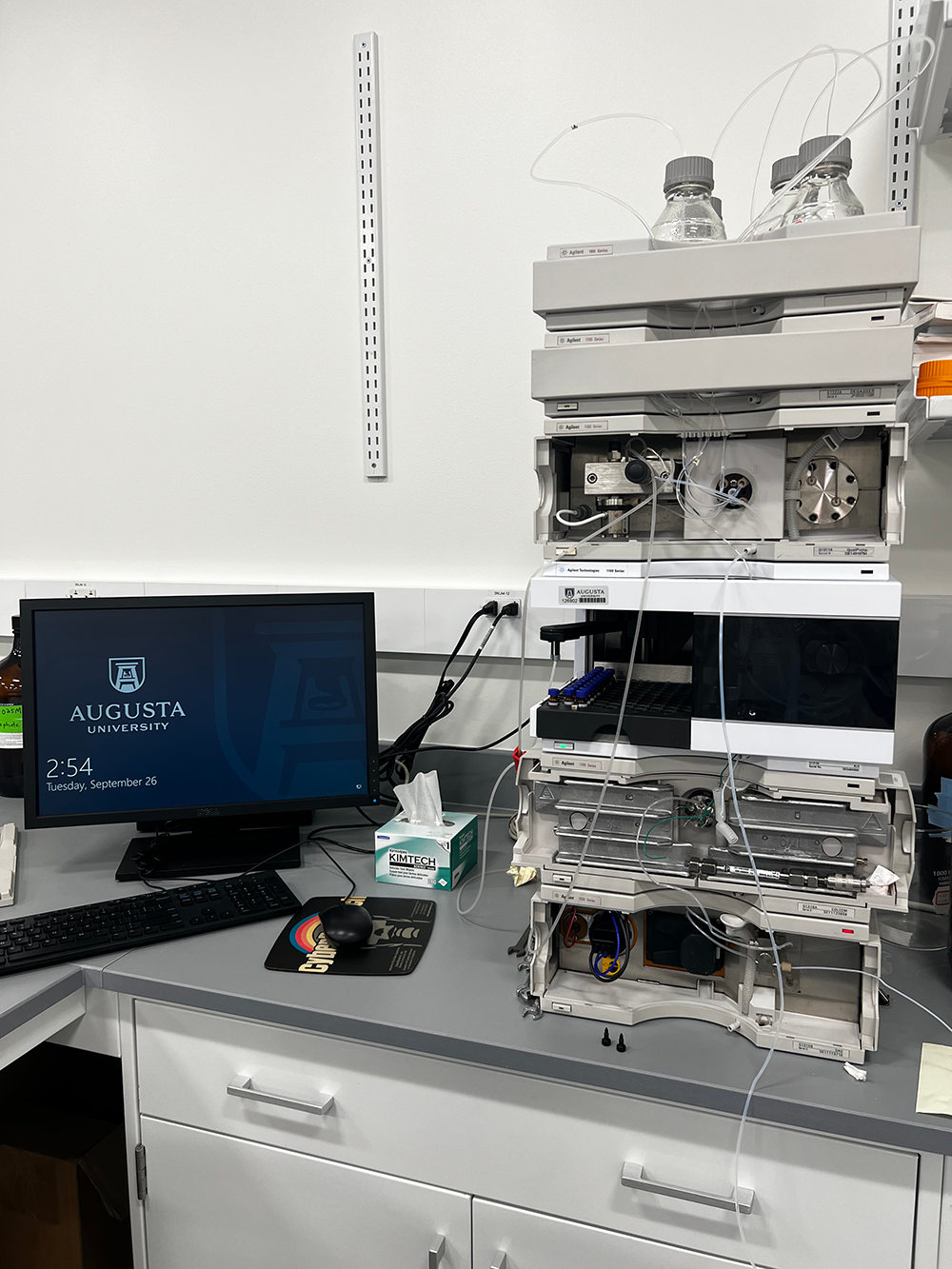
High Performance Liquid Chromatography
High performance liquid chromatography or commonly known as HPLC is an analytical technique used to separate, identify or quantify each component in a mixture. The mixture is separated using the basic principle of column chromatography and then identified and quantified by spectroscopy. The information that can be obtained by HPLC includes resolution, identification and quantification of a compound. It also aids in chemical separation and purification. The core facility hosts an Agilent 1100 HPLC with diode array detector.
Rates:
| Use Type | Internal | External | Commercial |
| Assisted Usage | $38/hr | $55/hr | $80/hr |
| Instrument Charge | $0/hr | N/A | N/A |